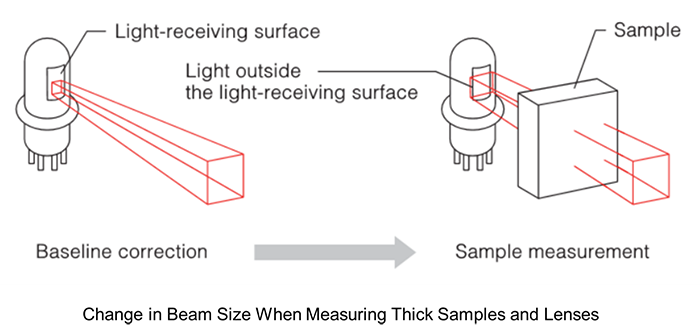How does sample thickness influence linear transmission measurements?

Linear transmission measurements are relatively simple to perform but there are several points you need to be aware of. One is the sample thickness. If the sample thickness exceeds about 3 mm, the focal point will change considerably between baseline correction and sample measurement. This results in changes in the beam size at the detector light-receiving surface, making it impossible to obtain accurate transmittance values. This change in beam size results from the difference in refractive index between air and the sample. If the transparent sample is sufficiently thin, the change in beam size will be small and not cause any problems during measurements. As samples become thicker, this effect becomes more difficult to ignore. The figure here shows a schematic view of the change in beam size. Total transmission measurements using an integrating sphere, as described below, are suitable for thicker samples. It is impossible to obtain accurate transmittance values for samples, such as lenses, which are thin but the focal point changes significantly between baseline correction and measurement. Total transmission measurements are also suitable for these samples.


